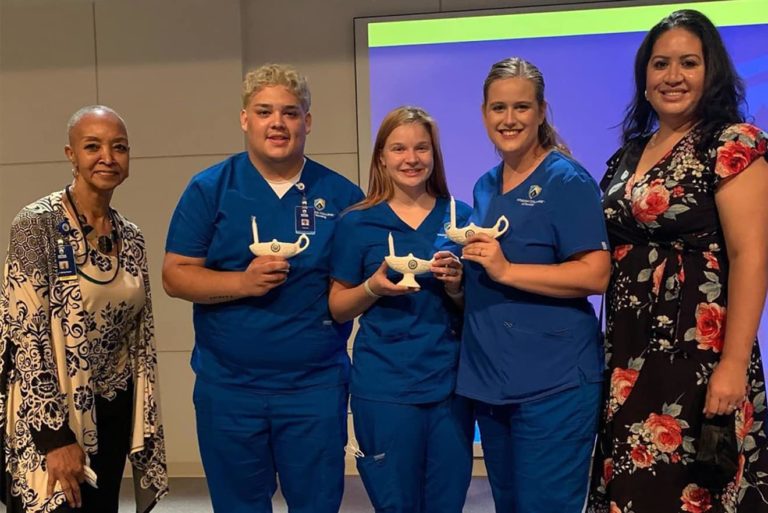Advancement Ceremony honors the past while celebrating future nurses
At Arizona College of Nursing, the Advancement Ceremony is one of our favorite traditions for our students and staff. It marks the transition from general education coursework into the core nursing curriculum and welcomes students into the nursing profession. When our students participate in the lamp lighting ceremony, they are joining thousands of others across the world that participate in a similar tradition and are welcomed into the nursing profession.
This small ceramic lamp our students receive during the ceremony has a rich history. The lamp of knowledge (life) is the official symbol of the nursing profession and hails back to the modern foundress of nursing, Florence Nightingale. Florence Nightingale was a British nurse, social reformer, and statistician who greatly influenced the quality of healthcare and how the nursing profession is viewed today.
Florence Nightingale became famous serving as a nurse during the Crimean War. Her approach to hygiene and sanitation on the front lines, and patient care, changed the way we approach medicine. Florence Nightingale was dubbed “The Lady with the Lamp” because of her habit of making rounds at night and assessing patients, which was an uncommon practice at the time. In 1857 her nickname was immortalized in Henry Wadsworth Longfellow’s poem, “Santa Filomena”.
“People often don’t know that nursing was not a respected profession prior to the work and advocacy of Florence Nightingale,” said Provost, Arizona College of Nursing, Dr. Patrick Robinson. “She was welcomed back from the Crimean War as a heroine for drastically reducing the death rates of wounded soldiers. Her work there lifted the reputation of nursing from plebeian and menial to a skilled profession that became appealing to many upper-class women”.
After Florence Nightingale returned from the war, she gathered and analyzed vast amounts of army data to show the correlation between proper sanitation and a lower death rate. By using science and statistics to reform health care she is largely responsible for how healthcare institutions operate today.
Florence Nightingale established St. Thomas’ Hospital and the Nightingale Training School for Nurses in 1860, the first school designed to train nurses. She continued studying and writing, publishing many scholarly books, pamphlets, and studies. At Arizona College of Nursing, the lamp is a symbol of history, the legacy of Florence Nightingale, and a reminder of the nobleness of the nursing profession.
“The lamp lighting ceremony is an important tradition honoring history and a symbol of the seriousness of the profession,” said Dr. Robinson. “Our job as nursing educators is to support and nurture the excellence to come. It is a privilege to welcome our students to the profession and pay tribute to the past as we prepare our future nurses.”
Information in this blog post is accurate as of November 5, 2021.


